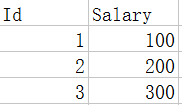##第18题
0、出题工作室:嵌入式工作室
1、题目名称:
基于C语言的简易计算器
2、题目背景:
C语言是嵌入式领域最常用的编程语言,掌握C语言对于学好嵌入式非常重要.我们现在希望你能用C语言编写一个简单的计算器.
3、题目内容:
- 程序通过标准输入读取运算式,运算结果输出到标准输出(通过键盘输入运算数和运算符,屏幕上打印出来)
- 支持加减乘除运算操作
- 支持浮点数运算
- 不用考虑正负号,括号,算数优先级,文件操作,指数对数运算等复杂运算
实现基本要求就可以通过本题.
加分项:
1.支持文件操作,从文件中读取运算式
2.支持指数运算,对数运算,幂运算等复杂运算,可以写成函数形式,例如power(2,10)=1024,也可以写成记号形式(要考虑优先级)
3.支持正负号,括号,算数优先级(提示:可以采用一种叫做栈的数据结构,和一种叫做逆波兰表达式的算法)
完成加分项越多,得分越高.
4、参考资料:
如果你不知道如何入手,我们给出了以下两个参考代码:
参考代码1非常采用标准输入输出,支持加减乘除,不支持浮点数,不支持算数优先级.你可以对于参考代码1稍微进行修改,使得程序支持浮点数运算,就可以实现基本要求.
参考代码2支持文件操作,支持加减乘除,支持算数优先级,不支持浮点数.你也可以对代码2进行修改.
参考代码1:
#include<stdio.h>
#include<stdlib.h>
#define MAX_SIZE 10
int readOperand();//读取运算数
int Operation(int operand1,char operator,int operand2);//进行运算,运算结果暂存于operand1中
int Operation(int operand1,char operator,int operand2){
switch(operator){//根据运算符进行加,减,乘,除运算
case '+':operand1 += operand2;
break;
case '-':operand1 -= operand2;
break;
case '*':operand1 *= operand2;
break;
case '/':
if(operand2 != 0){
operand1 /= operand2;
break;
}
else{
printf("除数不能为0");
exit(1);
}
default: printf("运算符不能识别");
exit(1);
}
return operand1;
}
int readOperand(){
char temp[MAX_SIZE];
int operand;
scanf("%[0-9]",temp);//先读取字符串,不读换行符
sscanf(temp,"%d",&operand);//再从字符串中读数字
return operand;
}
int main(){
int operand1,operand2;//运算数1,运算数2
char operator;//运算符
operand1 = readOperand();//读取运算数1
operator = getchar();//读取运算符
while(operator != '\n'){//如果运算符不是换行符,一直读
operand2 = readOperand();
operand1 = Operation(operand1,operator,operand2);
operator = getchar();//读取运算符
}
printf("%d\n",operand1);//输出运算结果
return 0;
}
参考代码1示范输入:10*12-20
示范输出:100
参考代码2:
/* cal.c
* 仅支持 + - * / int 的 C 语言计算器 (不支持正负号, / 为整数除法)
* (C) ES, 2016
*/
/* 样例:
* intput:
* 1 - 6 / 3 + 8 - 3 * 10086 / 356 - 34798 + 6666 ^D
* output:
* 0 + 1 = 1
* 6 / 3 = 2
* 1 - 2 = -1
* -1 + 8 = 7
* 3 * 10086 = 30258
* 30258 / 356 = 84
* 7 - 84 = -77
* -77 - 34798 = -34875
* -34875 + 6666 = -28209
* ans = -28209
*/
#include <stdio.h>
#include <stdlib.h>
#define type_num int
#define scanf_num "%9d" /* 式子中自然数最多9位 */
#define printf_num "%d"
#include "assert.h"
/**
* 从 file 中读取式子(以 ^D 结束) 运算后返回结果
* 遇到错误直接退出
*/
type_num read(FILE* file);
int main() {
printf("ans = "printf_num"\n", read(stdin));
return 0;
}
type_num read(FILE* file) {
type_num num, ans = 0, oldans;
int op1 = '+', op2;
for (;;) {
if (fscanf(file, scanf_num" ", &num) != 1)
fprintf(stderr, "不要瞎搞: 运算符 %c 后面输了个啥 1\n", op1), exit(1); /* 一开始没输数字会出现 "运算符 + 后面输了个啥 1", 待处理 */
op2 = fgetc(file);
head: switch (op2) {
case '*': case '/':
/* num = read2(num, op2, file); */
{
type_num num2, oldnum;
if (fscanf(file, scanf_num" ", &num2) != 1)
fprintf(stderr, "不要瞎搞: 运算符 %c 后面输了个啥 2\n", op2), exit(1);
if (op2 == '/' && num2 == 0)
fprintf(stderr, "%s\n", "不要瞎搞: 除0啦,哥"), exit(1);
oldnum = num;
op2 == '*' ? printf("%d * %d = %d\n", oldnum, num2, num *= num2) : printf("%d / %d = %d\n", oldnum, num2, num /= num2); /* 可能溢出, 尚未完善 */
}
op2 = fgetc(file);
goto head; /* 以新的 num & op2 返回 switch 开头 */
case '+': case '-': case EOF:
oldans = ans;
op1 == '+' ? printf("%d + %d = %d\n", oldans, num, ans += num) : printf("%d - %d = %d\n", oldans, num, ans -= num); /* 可能溢出, 尚未完善 */ /* 第一次运算会输出 0 + ? = ?, 待处理 */
if (op2 == EOF)
return ans;
op1 = op2;
break;
default : fprintf(stderr, "不要瞎搞: '%c' 这是啥运算符 \n", op2), exit(1);
}
}
assert(0);
}
5、其他说明:
如果你对于题目理解有问题,欢迎加入嵌入式工作室招新qq群420019322提出问题,群里有学长学姐耐心解答你的疑惑,帮你启发思路.
你可以上网参考相关代码,但是杜绝直接抄袭.我们有专门的爬虫程序和查重程序,将在谷歌百度爬取相应代码并查重,如有发现抄袭代码作弊行为,后果自负.
题目接收邮箱:cyt1996@qq.com
抄送邮箱:ic_report@126.com
邮件格式:“题目名称—姓名”,发送答题时请记得填抄送地址,以便我们累计你的得分。

